7,8-Dihydroxyflavone: A Brain Health Supplement That May Support Neuroplasticity
Posted by Nootropics Depot on 31st Jul 2018
What Is 7,8-Dihydroxyflavone?
7,8-Dihydroxyflavone, also known as 7,8-DHF, is a naturally occurring flavone which is found in a few plants and trees such as the tridax daisy and Godmania aesculifolia. Flavones are a class of compounds characterized by their yellow color, and are widely distributed throughout a large variety of plants and trees. All flavones are based around the same chemical backbone, and are a subset of the larger class of flavonoids. Some of the more common flavones are apigenin and tangeretin, which are found in herbs such as chamomile and various citrus fruits.
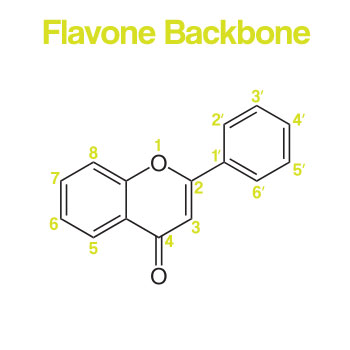
Each flavone has its own unique effects. For example, apigenin has been shown to promote relaxation, and tangeretin has been shown to promote healthy cholesterol levels. When it comes to 7,8-dihydroxyflavone, however, the placement of the hydroxy groups on the flavone backbone resulted in a compound that can activate TrkB, or tropomyosin receptor kinase B , receptors to a significant extent. This is very unique since only a limited selection of compounds, besides complex peptides, can activate this receptor. Since 7,8-dihydroxyflavone is not a peptide, it is considered a small molecule activator of TrkB. Small molecule activators of TrkB have been highly sought after in scientific research, but most attempts did not turn out all to well. That is until a research group ran an extensive search on various molecules that could be strong candidates for a small molecule TrkB activator. This search singled out a few compounds, one of which was 7,8-dihydroxyflavone, which is found in nature and is surprisingly effective as a selective TrkB activator.
Why should we care about TrkB activation?
TrkB is a unique receptor that responds to various proteins that our body makes. The principle protein that activates the TrkB receptor is brain derived neurotrophic factor (BDNF). BDNF, through its actions on the TrkB receptor, is an important regulator of how our brains can change, adapt and resist our environment. These effects are collectively referred to as "neuroplasticity." It is the process by which our brain can physically change, by producing new cells and forming new pathways between brain regions. Neuroplasticity is an important process that is involved with a large variety of brain functions. For example, neuroplasticity in a region of the brain called the hippocampus is crucial for learning, memory, and mood.
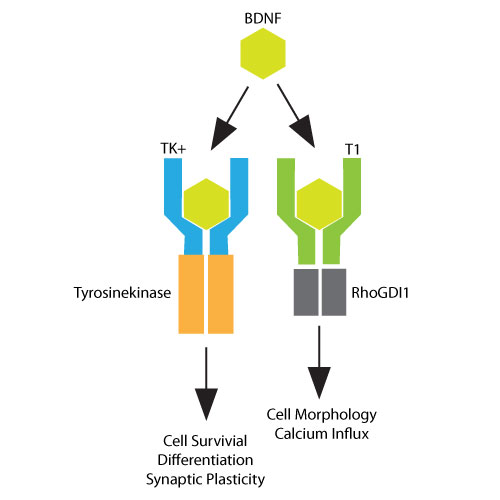
So, if our bodies produce BDNF, why is it so important to find compounds which can activate the receptor independently of BDNF? The main reason for this is that BDNF signaling can become effected through various factors such as stress, nutrition, and the environment we live in. When this occurs, our brains become less resilient. By reducing factors that decrease BDNF production, and by supplementing with a TrkB activator, we can support a positive mood and overall cognitive function, even in the face of elevated stress. In addition to this, TrkB activation may help protect our brains from oxidative stress and glutamate induced excitotoxicity.
How does 7,8-dihydroxyflavone work?
To understand how 7,8-dihydroxyflavone works we will first have to explore the TrkB receptor a little bit. The TrkB receptor has two sites at which molecules can bind. BDNF can bind to both sites, however, it appears that the carboxyl-terminal half of the TrkB receptor is the most important site for TrkB induced neuroplasticity. 7,8-dihydroxyflavone appears to bind strongly to the carboxyl-terminal half of the TrkB receptor, with similar potency to BDNF. This is a very interesting finding and indicates that 7,8-dihydroxyflavone perfectly mimics BDNF at the TrkB receptor. This is what makes 7,8-dihydroxyflavone so unique, as not only does it bind to the same site as BDNF, but unlike BDNF it can easily cross the blood brain barrier. There are various problems with producing and administering BDNF and one of the biggest limitations is that BDNF cannot cross the blood brain barrier, and thus, supplemented BDNF would not have any effects on the TrkB receptor. 7,8-dihydroxyflavone on the other hand, very readily passes the blood brain barrier and it can activate TrkB receptors at a similar potency to BDNF.
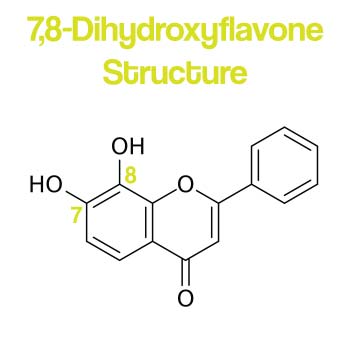
The TrkB receptors exist as monomers in their inactivated state. Monomer refers to there only being one TrkB receptor. Upon activation, structural changes in the TrkB receptor cause it to merge with another TrkB receptor. This process is called dimerization, and we now have a TrkB dimer instead of a monomer. The TrkB dimer can attract phosphate groups from ATP (to learn more about this, read the ATP section of our creatine monohydrate blog), which causes the TrkB dimer to become phosphorylated. Once TrkB is phosphorylated, it can start giving phosphate groups to inactive signaling proteins, which require phosphate groups to become activated. The phosphorylated TrkB dimer can give out multiple phosphate groups to signaling proteins. This means that activation of the TrkB receptor by 7,8-dihydroxyflavone sets in motion a very large signaling cascade through multiple different signaling pathways. The three main pathways are the PKC, Ras/MAPK, and PI3 pathways. These pathways all affect a large variety of brain processes involved with neuroplasticity. However, they do all eventually converge to activate a protein called CREB. Once the CREB protein is activated, it can bind to the CREB binding protein (CBP), which coactivates CREB. At this point, CREB can start to influence transcription factors, which allows CREB to produce physical changes in the brain. These physical changes are collectively referred to as neurogenesis.
As you can see, the TrkB system is crucial for most brain activity, especially when it comes to neuroplasticity. Due to this, 7,8-dihydroxyflavone is very versatile and can promote overall healthy brain function. As if mimicking BDNF wasn’t enough, 7,8-dihydroxyflavone also interacts with a host of different brain processes. Two of the most relevant processes to overall brain health are that 7,8-dihydroxyflavone helps promote healthy levels of oxidation and inflammation in the brain, independently of the TrkB receptor. These effects, paired with the neuroplasticity effects of 7,8-dihydroxyflavone, make it an excellent supplement for overall brain health!
View more Nootropics Depot blog articles by clicking the links below:
The Best Supplements to Support Collagen Synthesis and Skin Health
Ashwagandha Benefits: An Ayuverdic Herb For Stress Support, Immune Health, and Restful Sleep
CoQSol-CF CoEnzyme Q10: The Superior CoQ10 Supplement Over Grocery Store Brands
The Top 5 Milk Thistle Health Benefits
A Closer Look At The Top 5 Taurine Benefits
Melatonin Supplements: Did You Know This Popular Over The Counter Sleep Aid Is Often Overdosed?
How To Boost Your Immune System With the 5 Best Immune Supplements
Nootropics Depot's Guide to the Top 10 Natural Nootropics of 2018
EpiCor Immune Health: The Natural Immune Boost Supplement You May Not Know About
Nigella Sativa: The Top Health Benefits of Black Seed Oil Extract
Magnesium Glycinate vs. L-Threonate: Which Is The Best Magnesium Supplement?
Cognizin Citicoline: A Choline Supplement That Supports Healthy Brain Function
Creatine: A Nootropic for Bodybuilders, Athletes, Vegans, Vegetarians Alike
How to Find the Best Curcumin Supplement and What to Know Before You Buy
Comparing Rhodiola rosea Extracts: Rosavins vs. Salidroside
Berberine: A Look at the Potential Benefits of this Versatile Supplement
Lion's Mane Mushroom: Comparing our 1:1: and 8:1 Extracts
Nitric Oxide Boosters Reviewed: L-Citrulline, Agmatine and AAKG
Red Reishi Mushrooms: Comparing our 1:1 and 8:1 Extracts
Comprehensive Guide to the Best Anti-Aging Supplements
Cordyceps Militaris Mushrooms: Comparing our 1:1 and 10:1 Extracts
Bacognize vs. Synapsa: Which Ayurvedic Herb is Right for You?
The Nootropic Synergy of Caffeine + L-Theanine
L-Citrulline vs. L-Citrulline DL-Malate: Which is Best?
Shilajit: A Look at this Amazing Ayurvedic Compound
The Ultimate Guide to Nootropics
Mushroom Extracts: Whole Fruiting Bodies vs. Mycelium On Grain
Teacrine: The Alternative to Caffeine
Zembrin: A Natural Way to Boost Your Mood
Ashwagandha: KSM-66 vs. Sensoril
Panax Ginseng: What You Might Not Know
Palmitoylethanolamide: Known for its Pain Reducing Qualities
Put to the Test: A Look at Nootropics Depot's Purity Testing
Browse More From Nootropics Depot


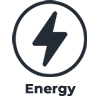

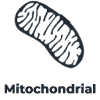
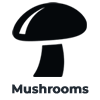

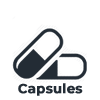

Ayurveda | Adaptogens | Amino Acids | Choline Supplements | Fitness Supplements | Immune Support | Metabolism Supplements | Mushroom Extracts | Natural Plant Extracts | Natural Nootropic Capsules | Natural Pain Support | Patented Nootropic Extracts | Sleep Support Supplements | Softgels | Solutions + Sublinguals | Enteric Coated Tablets | Nootropic Samples
Attention: These statements have not been evaluated by the Food and Drug Administration These products are not intended to diagnose, treat, cure or prevent any disease.

